Guest blogged by Anne
Most people seem to associate Colombia with the drug-fueled violence of the Pablo Escobar years and decades of guerrilla war. These days, the country has really cleaned up its act and is enjoying much more political and economic stability. Although still a third world country (with a minor guerrilla problem), a lot of investment is being made in infrastructure, urban design and culture. You can even drink the tap water (although you can’t flush the toilet paper). The country is well connected with cheap flights which makes getting around simple.
We started off in the capital, Bogota, which is a city of 8 million people. We were there on a Monday (when a lot of the tourist attractions are closed) which was also a holiday (when pretty much everything is closed) which was a bit of a fail. Luckily, on public holidays (and some Sundays) the city closes one of its main streets right across town for public recreation. In the morning the street is basically a massive cycling and running area and then in the afternoon a smaller section is turned into a very festive market. There is security everywhere, along with refreshments for sale and bike-repair kiosks. We did manage to take a cable car ride up to Monseratte for great views and visited the (free) Museo Botero. A lot the attractions in Colombia turned out to be free or very cheap. Fernando Botero is certainly Colombia’s most famous artist and one of the world’s most famous living artists. You’ll recognise his work because he specializes in fat – chubby characters, rotund animals and even a Mona Lisa who needs to let up on the pies.


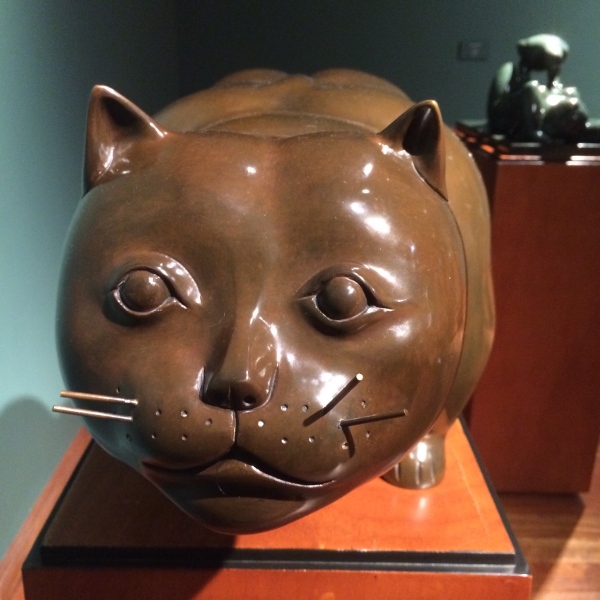
Next stop was Medellin, a city which won the most innovative city in the world award in 2013. The city is built in a valley with the main business area and smarter suburbs closer to the valley floor and the poorer areas and slums stretching up the sides. The Metro is very impressive, cheap and efficient, and even includes cable cars which have apparently made a massive difference to the poorer communities. A portion of every building project’s budget has to be devoted to art and the city has made clever use of public spaces with a lot of free and cheap attractions. We visited a nature reserve called Parque Arvi, the botanical gardens, a view point with a replica of a traditional village and wandered a bit around the chaotic central part of town. We stayed in the main tourist area (El Poblano) which is a lovely leafy suburb jam packed full of bars and eateries. Although it still has its problems, Medellin has transformed itself from being the city with the highest murder rate in the world to being a safe and modern place, with world class social development initiatives.

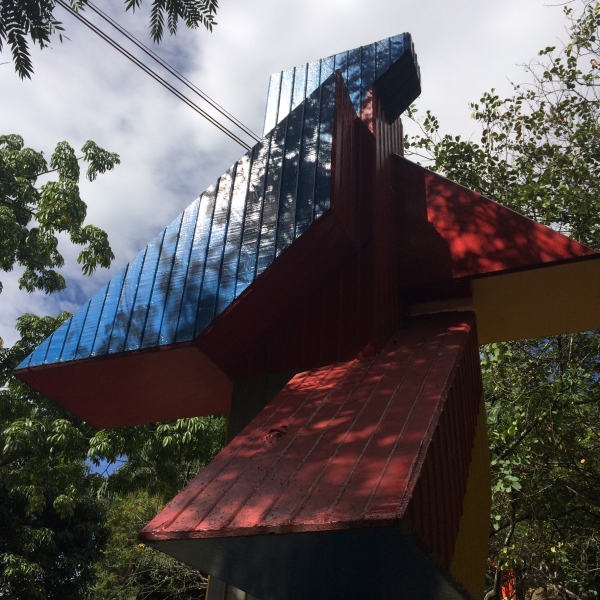
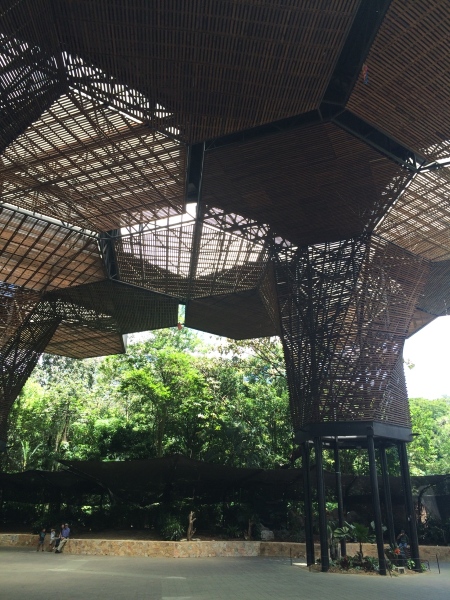


From Medellin, a flight and a short bus ride brought us to Salento, a lovely little village in the heart of coffee country. Although the actual coffee from the area is not very well regarded, it’s a beautiful and safe area, and so specializes in coffee tourism. The thing to do in the area is a hike through the Vallee de Cocoros, a gorgeous valley full of cloud forest and massive palm trees straight out of Jurassic Park. Transport to the valley is on the back of old ‘Willy’ jeeps. At the halfway point at a small farm, 5 000 pesos (about USD2) gets you a hot drink and a place to sit with a view of some sugar water feeders for the amazing variety of hummingbirds. Although you can order coffee or hot chocolate, the thing to have is aguapanello con queso, basically hot sugar cane juice with a slice of cheese in it. Sugar and cheese together? Nothing could make a Colombian happier. There was some excitement when a coati (racoon-like creature) tried to steal the eggs from the chicken coop.


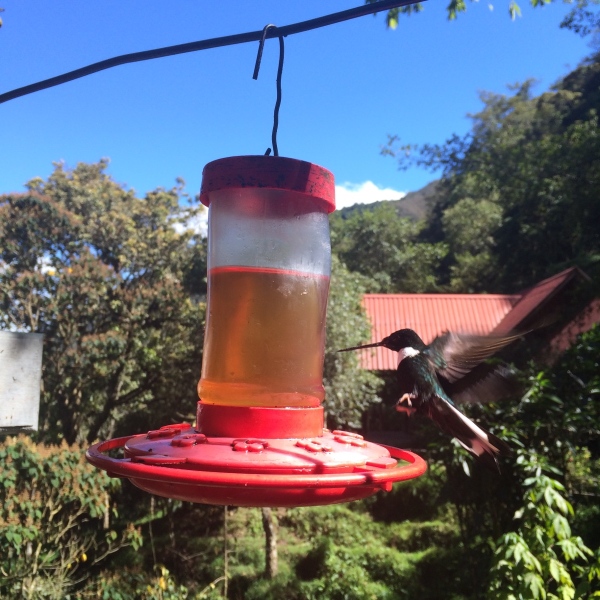


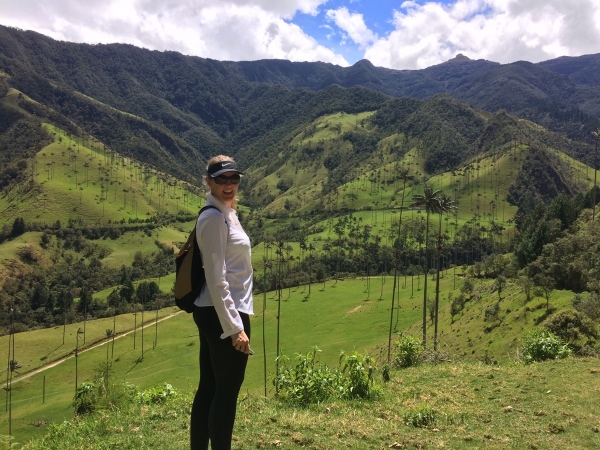






Special mention must be made of the great hostel we stayed at in Salento, La Eliena. The owner, Jesus, is an awesome Spanish guy who has picked up some very cool interests over the years. For example, he makes fantastic Indian curries; and has a special interest in coffee which he shares via a 3 hour coffee appreciation class. Definitely recommended.

Unfortunately the first bus out of Salento was too late so we had to hire a private Willy back to the airport for our flight to Cartagena. Cartagena de Indias is a very popular tourist destination on the Carribean, known particularly for its heavily fortified old colonial town centre which was a major slaving port. We stayed just outside of the old town in a suburb called Getsemani, a very lively area full of backpackers and locals chilling on the squares and in the many bars and restaurants. The old town has a number of museums and historical buildings you can visit, including a very cool museum exhibiting pre-Colombian gold. The city offers a great balance between the touristy centre and the more local surrounding areas and we really enjoyed it.









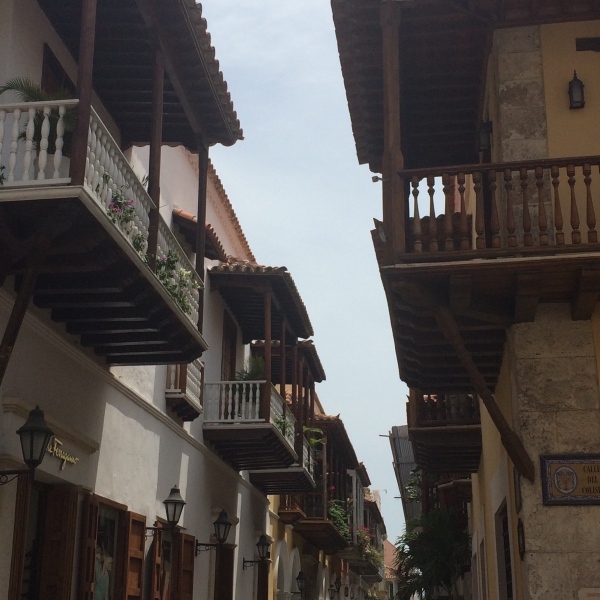
Next stop was a small town further along the Carribean coast called Taganga. It is a bit of a weird place, with a brown sand beach set in a steep sided bay and a lot of shabby-looking buildings and arid vegetation. The main attraction of the place is scuba because it is a cheap place to learn to dive, although based on the two dives we did, it’s not particularly good diving. The water was cold (for me in a hired wetsuit), 24 degrees, and visibility wasn’t great. I saw a few interesting Caribbean specialities like flamenco tongues but the level of diversity wasn’t anything special. Despite the slightly dodgy appearance, Taganga is home to a host of lovely restaurants and bars, including a quirky beach bar run by a German guy who only sells beer, including Paulaner from Munich and a local craft brand that he supplies to all the restaurants in the area. We definitely won’t be leaving Colombia lighter than we arrived.

From Taganga it is also possible to do a day trip to the Tayrona national park which is a beautiful protected area of coastline. The whole process of getting to the park is very Colombian – our bus was late and then full so they hired us a taxi, the queuing system to buy tickets is very mysterious and requires that you get your hands on a ticket to prove that you listened to the extremely fast, extremely Spanish safety briefing and then in the end our bus driver bought the tickets anyway. We were ready to leave at 7:30am and eventually made it into the park at 11. Our trip back was also filled with much Colombianess when our driver arrived 45 minutes late and then to make it up to us took us all (2 bus loads of us) for a cold drink at a cafe, wasting another half an hour. Despite the chaotic entry process, the park is really well looked after with great paths and signage and incredibly clean. The main tourist area is a strip which you can access in the east by bus and in the west by boat with only hiking or rented horse riding in between. It’s a sweaty 2-3 hour hike from one side to the other, partly on the beach and partly in the gorgeous tropical forest. We stopped short of the end point because we were bus-ing it both ways. Along the way we saw a snake constricting a lizard, some monkeys of uncertain type (we think howler) and some neques (a capybara-like rodent). There are a few campsites, restaurants/kiosks and accommodation options (mostly of the “rent a hammock” variety) and we saw a lot of people (tourist and local) hiking in with a few bits of bedding, a plastic bag with some food and an inflatable pool toy or two. The beaches are spotless, have actual waves and are completely free from hawkers. An amazing place to visit.



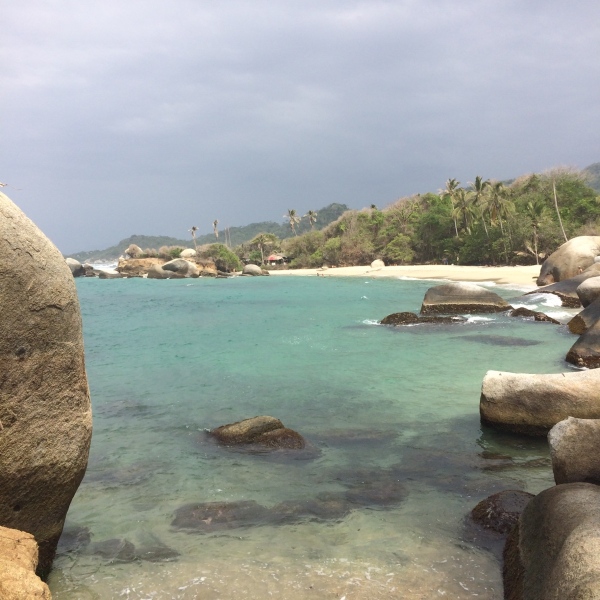


Food in Columbia is fantastic (although not particular cheap) with no shortage of excellent restaurants ranging from simple Colombian snacks to international cuisine and gourmet degustation menus available all over the place. They have a particular love of cheese and sweets, especially arequipe which is their version of dulce de leche (think caramel treat for the South Africans). Some of the more delicious things we ate:



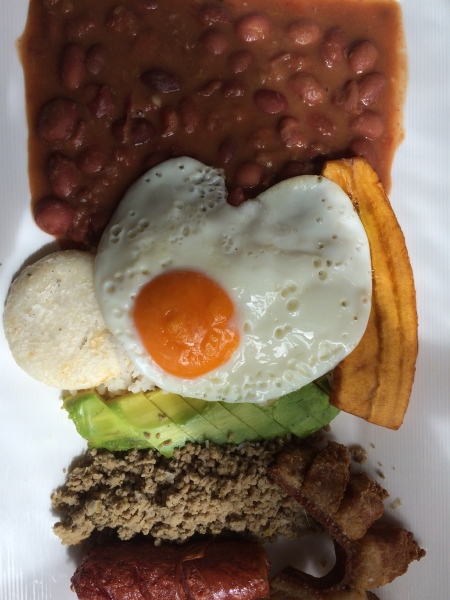



We highly recommend a visit to Colombia. Hopefully we’ll be back some day, because there is lots we didn’t see and do.
En route home we should have had 12 hours to kill in Sao Paolo although SAA seems to be trying to keep us here a bit longer. Those of you who followed Dave’s trip last time will remember the time he spent moonlighting as a Brazilian rain god and true-to-form, the glorious weather prediction turned to rain immediately. We started off with a walk around Beco de Batman, a residential street which is famous for its street art. Then we did a free walking tour which was really excellent, showing us the various main sights of the central area of the city and taking us to an amazing bakery for Brazilian pastries. The Brazilians may be the best bakers in the world. We slipped away from the tour a bit early to have some tasty caipirinhas as a local diner on our way back to the airport. It was only a small taste of Sao Paolo but although the city has a bit of a gritty edge, we’ve only had a taster and will be keen to come back.
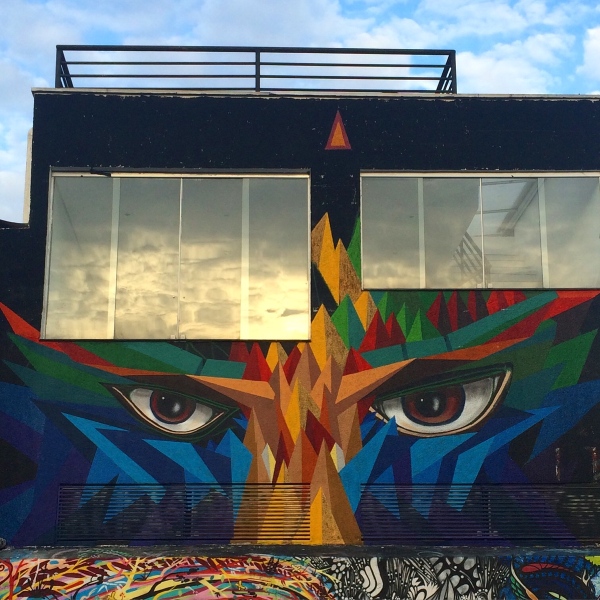




- The Great Davido God of Rain

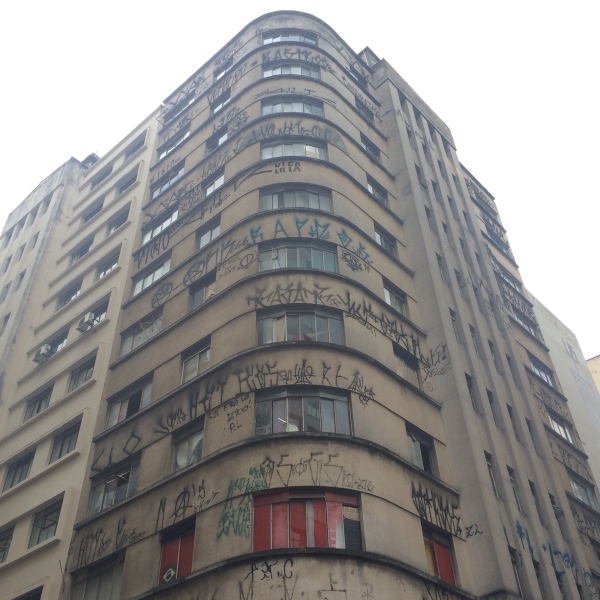


It’s been an amazing 54 weeks and I’ve managed to go to so many places that have been on my list for years. I’ve met some great people and it’s been wonderful to travel with so many of my friends (and especially Anne) who joined me at various points throughout my trip. Seeing so many of my family members living around the world was a particular highlight. There have also been a few lowlights, in particular losing my uncle Andrew last year. From tomorrow I’ll need to start easing myself back into the real world, but will also be planning my next holidays! Thanks to everyone who has been reading the blog and supporting me. The plan is to keep the blog going as we continue to travel, as well as to add some info for visitors to Joburg.
Some quick stats on my trip:
- 32 countries, 22 of them new
- Just under 100 dives in 9 counties and 3 oceans
- Walked up 3 volcanoes (Vanuatu, Guatemala, El Salvador)
- 7 different ski resorts in 3 countries
- Too many kilometers to count of walking, hiking and trekking
- Highest point in a car 4200m (Bale Mountains, Ethiopia)
- Highest point on foot about 3750m (Annapurna, Nepal)
- Lowest point -40m (Blue Hole, Belize)
- Fastest non-mechanized speed about 85km/h (on skis)
- Coldest spot -30C (allowing for wind chill, St Anton Austria)
- Hottest spot about 36C (south of India)
- Most endangered canine, the Ethiopian wolf (Bale Mountains, Ethiopia)
- Largest feline, the tiger (India)
- Largest animal, the blue whale (Sri Lanka)
- Largest single tree, the giant sequoia (Yosemite, USA)
- Tallest Palm, the Wax Palm (Valle de Cocora, Colombia)
- Snorkelled with whales for the first time (Port St Johns, South Africa)
- Peak of highest mountain in world (from Darjeeling)
- Number of 8000m+ mountains seen: 7
Links:
Accommodation:
La Eliana in Salento http://www.laelianasalento.com
Food:
Brunch in Salento http://www.tripadvisor.com/Restaurant_Review-g1580963-d3206655-Reviews-Brunch_de_Salento-Salento_Quindio_Department.html
Pachamama in Taganga http://www.tripadvisor.com/Restaurant_Review-g1149024-d1523837-Reviews-Pachamama-Taganga_Santa_Marta_District_Magdalena_Department.html
Carmen in Medellin http://www.carmenmedellin.com
In Situ in Medellin http://www.botanicomedellin.org/servicios/alimentos-y-bebidas/restaurante-in-situ/
Andres in Bogota http://www.andrescarnederes.com/es/
Diving:
Poseidon in Taganga http://www.poseidondivecenter.com/index.shtml
Walking tour in São Paulo: http://www.saopaulofreewalkingtour.com

Sounds like a wonderful trip. Lovely insights into Colombia, thank you for sharing!
That’s all very nice David but it’s about time you came home to look after your aged parents!!!!
It will great to have you around again Dude. We missed you.